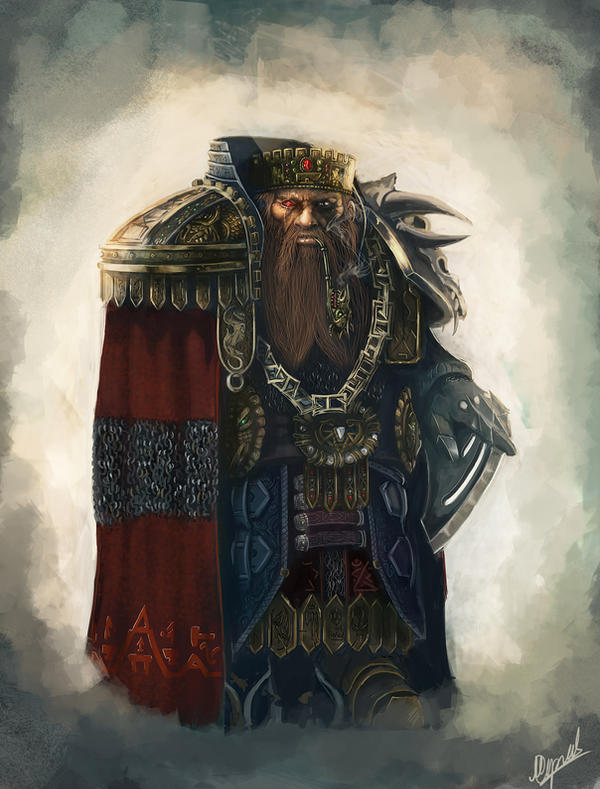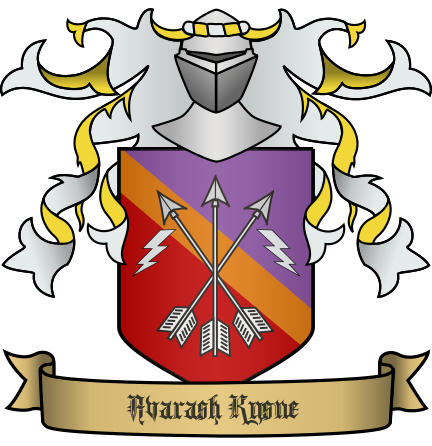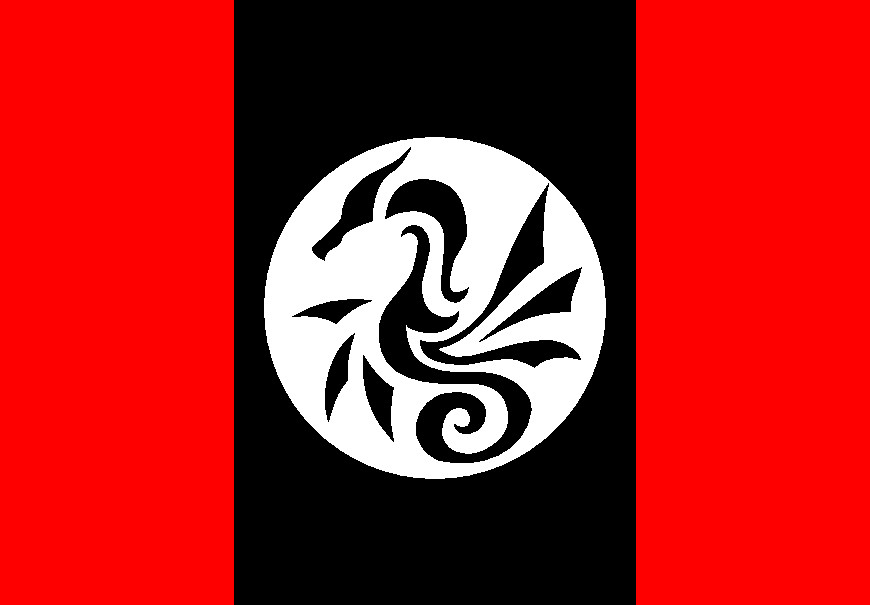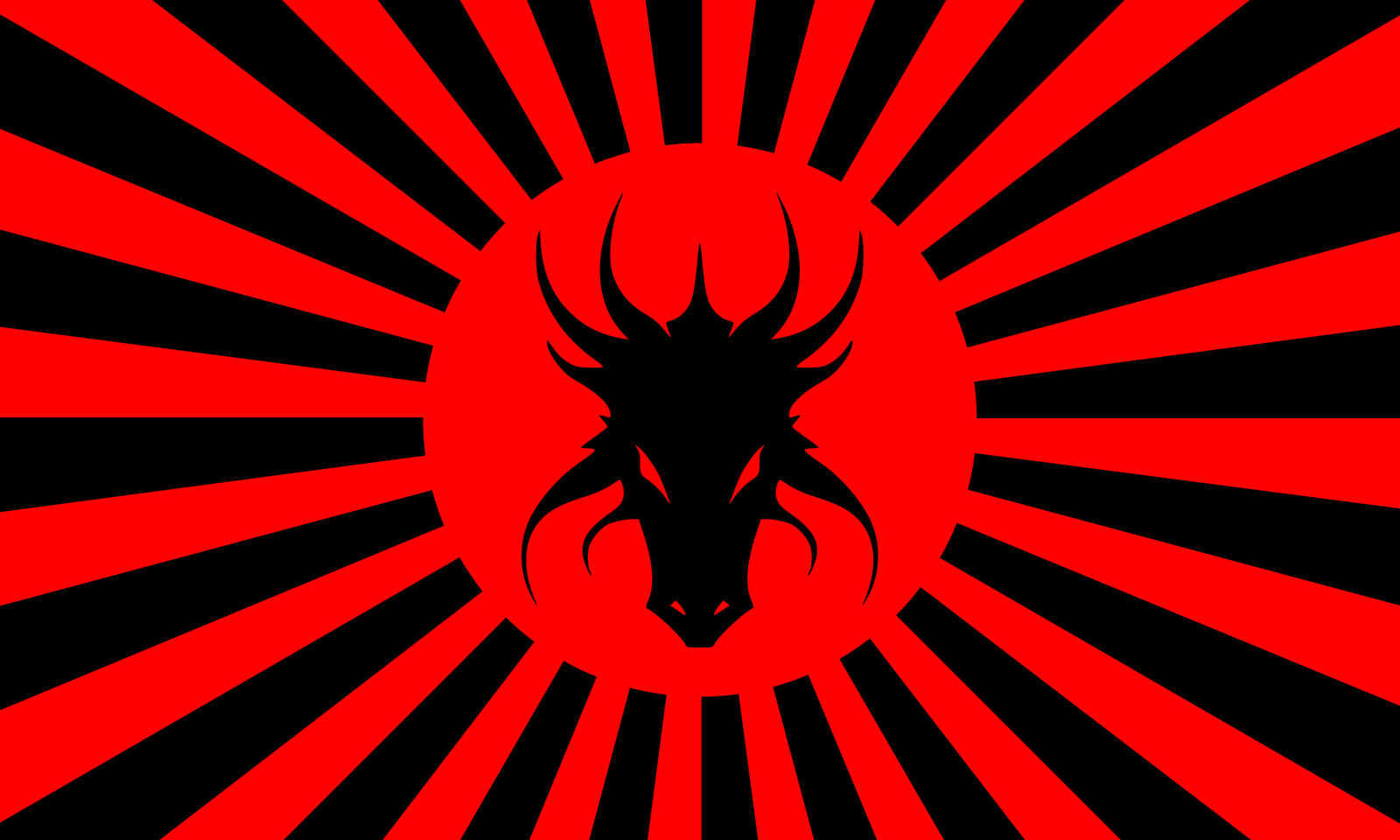
WIP
Discord : https://discord.gg/wdMM3Ur
OOC: Right here
IC: viewtopic.php?f=31&t=433921&p=33270340#p33270340
The Scholars will have yet to announce a name for the coming age. As dusk approaches the age of sorrows, new hope dawns. Harvests across the grand continent of Alcenia are blooming for the first time in over a century.
Temperatures rise, the people flourish and the armies of civilization once again stand firm against the creatures of the night and shadow. But the scholars know this period of glee and bliss will not last. For with hope, comes ambition and with ambition, comes war.
Premise
A large human empire conquered most of the known world, starting around 600 years ago. Rebellion, civil war and a mysterious wide catastrophy known as the great sundering brought its end, over a century ago, a century known as the age of woes and sorrow.
A century of failed harvests and ill-tempered fantasy monsters erupted from the deep, mysterious forests that dot the continent, destroying and burning most of what remained civilized.
It has been over five decades since this age of woe and sorrow has ended. Nations once more grow and thrive, elves, dwarves and others once more stand as their own rules and humans are left with a world they once ruled and know hates them for it.
In this world, players can craft their own human or fantasy race kingdom, fledging and growing as the first true kingdoms, republics and factions that have come out of the age of woes and sorrow.
Players will then have a chance to craft their own story as their nation struggles to survive against various events and monsters that will spawn across the world. In case of interest, I can add a component for adventuring for players. This is world with many secrets, ancient monsters and many a dungeon or ruin to discover.
A century of failed harvests and ill-tempered fantasy monsters erupted from the deep, mysterious forests that dot the continent, destroying and burning most of what remained civilized.
It has been over five decades since this age of woe and sorrow has ended. Nations once more grow and thrive, elves, dwarves and others once more stand as their own rules and humans are left with a world they once ruled and know hates them for it.
In this world, players can craft their own human or fantasy race kingdom, fledging and growing as the first true kingdoms, republics and factions that have come out of the age of woes and sorrow.
Players will then have a chance to craft their own story as their nation struggles to survive against various events and monsters that will spawn across the world. In case of interest, I can add a component for adventuring for players. This is world with many secrets, ancient monsters and many a dungeon or ruin to discover.
Description of the continent
If you want a certain map location, please just open up a paint file, mark it and drop it to me via discord or the like.
https://www.imageupload.co.uk/image/E1T5
https://www.imageupload.co.uk/image/E1TZ
The known world comprises of the continent of Alcenia and the surrounding islands. Beyond these islands lie large oceans none have sailed beyond. Or at the least, none have returned to tell the tale.
To the far west lie the westerwoods, filled with creatures so vile and in such number, that not even the empire at its height could conquer it.
To the north-west lie the great deserts of Barak, little is known of the vast mysterious lands of sand and heat. To the south, lie deep, dark and ancient snow-covered pine forests, going as far as anyone has ever explored. The further one travels in that deep snowy woodland, the more vile and dangerous the beasts one encounters. No sane people have ever settled their.
Alcenia lies surrounded by sea, desert and dangerous forests, a region of relative safety and comfort for the fledging kings and queens that scheme and war for their various ambitions.
To the far west lie the westerwoods, filled with creatures so vile and in such number, that not even the empire at its height could conquer it.
To the north-west lie the great deserts of Barak, little is known of the vast mysterious lands of sand and heat. To the south, lie deep, dark and ancient snow-covered pine forests, going as far as anyone has ever explored. The further one travels in that deep snowy woodland, the more vile and dangerous the beasts one encounters. No sane people have ever settled their.
Alcenia lies surrounded by sea, desert and dangerous forests, a region of relative safety and comfort for the fledging kings and queens that scheme and war for their various ambitions.
History
Nearly a thousand years ago, A human republic arose victorious from a series of petty wars with its envious neighbors.
Empowered by pride and number, their drive for conquest never ceased. Soon enough, their grand republic comprised much of continental lowlands.
This republic, named itself after its capital, The Alcenian Republic, a name later gifted to the continent itself.
Its armies, strong, organized and experienced, cut swathes through the less fortunate or savvy human tribes and petty kingdoms around it.
When this republic ran out territory to conquer, people to enslave, gold to pillage, it had to pay the price for centuries of blood and warfare.
The slave economy collapsed, its people revolted and Alcenia was nearly burned to the ground in bloody civil war and rebellion.
When the fires were doused at the following dawn, the republic was no more and an empire has rose in its wake.
Once more did the grand Alcenian armies march through the continent, seeking conquest, glory, gold and riches for its emperors.
As there were no more human tribes to conquer, the other races were crushed under their heel. The enigmatic elvish could not hope to withstand the endless armies of the Empire and the dwarves could do little more than to hide in their mountains, few others managed to escape the greed and wrath of the Alcenian Emperors.
Their cities shone with gold, marble and wealth beyond imagining and in its shadow, legions of slaves worked and died for the rich, powerful and sickly ambitious of the empire.
All this wealth, this glory, this age of suppression and death ended with the great sundering, little more than a century ago.
Civil war was common in the empire, slave uprisings even more so. All had always been crushed in rivers of blood, eventually. But this time, all would pay for the hubris of Emperor Julian Maximus the third.
No one know the true story, no books or fair account of those final days still exist. Only stories, legends and bardic songs remind people of the harsh days of the great sundering.
The gates of the great Imperial wall around the Alacinian capital closed shut and all that approached died by an unnatural curse, weaved by the grand magisters of the emperor. Winter followed spring, harvests failed, armies starved and healthy children died at birth, in the arms of their weeping mothers.
It is said fire rain from the skies and half beast, half demon creatures erupted from the westerwoods, murdering and pillaging across the lands of the collapsing empire.
Legends say this was an age of woe and sorrow. Where one would go to sleep, only to wake and see his children taken with only a strange trail, leading into the darkness.
It is said this period lasted for over century, a century were the empire fell, but any warlord attempting to rise from its shadow, swallowed by the age of sorrows.
It has been nearly fifty years, since the climate has improved, since the monsters in the woods have been kept at bay and none remember the last raid of the beasts of the westerlands.
Kings and heroes have risen, ready to claim the future, Ready to claim a new age of hope and glory...
Empowered by pride and number, their drive for conquest never ceased. Soon enough, their grand republic comprised much of continental lowlands.
This republic, named itself after its capital, The Alcenian Republic, a name later gifted to the continent itself.
Its armies, strong, organized and experienced, cut swathes through the less fortunate or savvy human tribes and petty kingdoms around it.
When this republic ran out territory to conquer, people to enslave, gold to pillage, it had to pay the price for centuries of blood and warfare.
The slave economy collapsed, its people revolted and Alcenia was nearly burned to the ground in bloody civil war and rebellion.
When the fires were doused at the following dawn, the republic was no more and an empire has rose in its wake.
Once more did the grand Alcenian armies march through the continent, seeking conquest, glory, gold and riches for its emperors.
As there were no more human tribes to conquer, the other races were crushed under their heel. The enigmatic elvish could not hope to withstand the endless armies of the Empire and the dwarves could do little more than to hide in their mountains, few others managed to escape the greed and wrath of the Alcenian Emperors.
Their cities shone with gold, marble and wealth beyond imagining and in its shadow, legions of slaves worked and died for the rich, powerful and sickly ambitious of the empire.
All this wealth, this glory, this age of suppression and death ended with the great sundering, little more than a century ago.
Civil war was common in the empire, slave uprisings even more so. All had always been crushed in rivers of blood, eventually. But this time, all would pay for the hubris of Emperor Julian Maximus the third.
No one know the true story, no books or fair account of those final days still exist. Only stories, legends and bardic songs remind people of the harsh days of the great sundering.
The gates of the great Imperial wall around the Alacinian capital closed shut and all that approached died by an unnatural curse, weaved by the grand magisters of the emperor. Winter followed spring, harvests failed, armies starved and healthy children died at birth, in the arms of their weeping mothers.
It is said fire rain from the skies and half beast, half demon creatures erupted from the westerwoods, murdering and pillaging across the lands of the collapsing empire.
Legends say this was an age of woe and sorrow. Where one would go to sleep, only to wake and see his children taken with only a strange trail, leading into the darkness.
It is said this period lasted for over century, a century were the empire fell, but any warlord attempting to rise from its shadow, swallowed by the age of sorrows.
It has been nearly fifty years, since the climate has improved, since the monsters in the woods have been kept at bay and none remember the last raid of the beasts of the westerlands.
Kings and heroes have risen, ready to claim the future, Ready to claim a new age of hope and glory...
Religion, gods and their relation to magic
My concept is rather simple. Gods are tangible, actual entities in this world and can, in extremly rare instances, be willing for direct communication. A god is born, sustained and empowered by prayer and acts of worship, those being in his nature ofcours more effective than other means.
Per example, if a tribe has a belief of a spirit god that watches over the forest and they have this belief for centuries and during those centuries they pray, sacrifice and perform ritual worship for this spirit, this spirit will actually be born. It will live and exist on a different plane of existence, althought the "barrier" between their plane and ours is thin, call it a veil if you will.
This Spirit will have a will of its own, but the nature of the rituals, prayer and the collective belief, present and past, define the nature of said god. So a god of valor and war, will enjoy violence, he will hate acts of dishonor, etc, etc. They are pure and rather childish in this regard as they are mostly onedimensional beings, although with age, they can become wise and more nuanced.
The downside is that older gods will rarely intervene of even bless mortals, even though nuance and forgiveness by these powerful entities is earned with age, they also become more picky with their followers. Younger gods, more eager to grow stronger, will present blessings more easily in the hope to promote more belief and worship, earning him more power.
So, quick and dirty, belief creates god, more belief makes god stronger, god can bless mortals who believe in him.
Blessings are varied and simple. Weras magic users are rare and precious, clerics and priests gifted with the power of their gods are less rare.
These blessings are however mostly simple, fortitude, luck, better health, small charms that in the hands of the truly faithful, make their lives a bit easier.
True, powerful blessings however, are difficult for even a god to grant. For to breach the veil, much power must be dispensed. So a god blessing a warrior with extra fortitude, to the point where it makes a true difference, the god, no matter which one, will make sure the individual is worth it. And considering gods are rather simplistic in nature, no matter if they are a god of health, benevolence, harvest or sunshine and rainbows, they will only gift such blessings to those who devote their utter lives to the worship and appeasement of that godly entity.
So true warrior clerics, paladins or even healing monks, bestowed by healing powers by a god of benevolence, per example, are also rare.
(In clear terms: Don't put thousands in your armies)
The Imperial Pantheon is the only predefined godly entity present in the game. These gods are also referred to as the fallen. Since and during the age of woes and sorrow, their have been rumors that not even the most devout priests, weeping upon the statues of the great gods have recieved a sign that they still live. Some believe that the age of woe and sundering has killed even the gods of yore.
The Alcenian Pantheon
Kav, God of Valor and War: The God Kav is one of the oldest in the Imperial Pantheon. Prizing martial prowess, bravery, and honor above all else, Kav's priesthood includes relatively few mages. The majority of his priests focus on learning how to fight instead of learning how to cast spells.
Quhena, Goddess of Love: The Goddess of love and passion, Quhena's domain crosses into passion of all sorts.
Sodos, God of Wine: The God of celebration and inebriation, Sodos' worshippers have garnered a negative reputation for themselves in most places since the fall of the Empire. Most Sodos worshipers are more concerned with worldly pleasure than affairs of the world - a very important distinction to make when the world as you know it is collapsing.
Odum, God of Order: Odum, the god of law and order, has traditionally been invoked by both the Alcenian legion and courts of law. Odum is traditionally opposed to disorder and other giving races a seat at the table as Odum teaches that any kind of disunity, even something as simple as a difference in race, sows chaos.
Tilmus, God of Death: Also called the Shephard of Souls, Tilmus is traditionally a protector of the dead and of the souls of the buried. Tilmus' priesthood traditionally oppose any disrespect of the dead as well as the living. His priesthood also frequently dedicate themselves to healing the sick or wounded: Tilmus doesn't want more people to die, he simply accepts that death is inevitable.
Cyhrena, Goddess of Wisdom: Goddess of Wisdom and military strategy, Cyhrena is a patron of magicians and organized militaries alike. Cyhrena states that decisions should be thoroughly thought out with backup plans for any possible consequences.
Auria, Goddess of Scholarship: Goddess of Scholarship and Magic, Auria is a popular patron of mages and scholars alike. Auria is a proponent of thorough study, preciseness, and caution in magic and life alike.
Per example, if a tribe has a belief of a spirit god that watches over the forest and they have this belief for centuries and during those centuries they pray, sacrifice and perform ritual worship for this spirit, this spirit will actually be born. It will live and exist on a different plane of existence, althought the "barrier" between their plane and ours is thin, call it a veil if you will.
This Spirit will have a will of its own, but the nature of the rituals, prayer and the collective belief, present and past, define the nature of said god. So a god of valor and war, will enjoy violence, he will hate acts of dishonor, etc, etc. They are pure and rather childish in this regard as they are mostly onedimensional beings, although with age, they can become wise and more nuanced.
The downside is that older gods will rarely intervene of even bless mortals, even though nuance and forgiveness by these powerful entities is earned with age, they also become more picky with their followers. Younger gods, more eager to grow stronger, will present blessings more easily in the hope to promote more belief and worship, earning him more power.
So, quick and dirty, belief creates god, more belief makes god stronger, god can bless mortals who believe in him.
Blessings are varied and simple. Weras magic users are rare and precious, clerics and priests gifted with the power of their gods are less rare.
These blessings are however mostly simple, fortitude, luck, better health, small charms that in the hands of the truly faithful, make their lives a bit easier.
True, powerful blessings however, are difficult for even a god to grant. For to breach the veil, much power must be dispensed. So a god blessing a warrior with extra fortitude, to the point where it makes a true difference, the god, no matter which one, will make sure the individual is worth it. And considering gods are rather simplistic in nature, no matter if they are a god of health, benevolence, harvest or sunshine and rainbows, they will only gift such blessings to those who devote their utter lives to the worship and appeasement of that godly entity.
So true warrior clerics, paladins or even healing monks, bestowed by healing powers by a god of benevolence, per example, are also rare.
(In clear terms: Don't put thousands in your armies)
The Imperial Pantheon is the only predefined godly entity present in the game. These gods are also referred to as the fallen. Since and during the age of woes and sorrow, their have been rumors that not even the most devout priests, weeping upon the statues of the great gods have recieved a sign that they still live. Some believe that the age of woe and sundering has killed even the gods of yore.
The Alcenian Pantheon
Kav, God of Valor and War: The God Kav is one of the oldest in the Imperial Pantheon. Prizing martial prowess, bravery, and honor above all else, Kav's priesthood includes relatively few mages. The majority of his priests focus on learning how to fight instead of learning how to cast spells.
Quhena, Goddess of Love: The Goddess of love and passion, Quhena's domain crosses into passion of all sorts.
Sodos, God of Wine: The God of celebration and inebriation, Sodos' worshippers have garnered a negative reputation for themselves in most places since the fall of the Empire. Most Sodos worshipers are more concerned with worldly pleasure than affairs of the world - a very important distinction to make when the world as you know it is collapsing.
Odum, God of Order: Odum, the god of law and order, has traditionally been invoked by both the Alcenian legion and courts of law. Odum is traditionally opposed to disorder and other giving races a seat at the table as Odum teaches that any kind of disunity, even something as simple as a difference in race, sows chaos.
Tilmus, God of Death: Also called the Shephard of Souls, Tilmus is traditionally a protector of the dead and of the souls of the buried. Tilmus' priesthood traditionally oppose any disrespect of the dead as well as the living. His priesthood also frequently dedicate themselves to healing the sick or wounded: Tilmus doesn't want more people to die, he simply accepts that death is inevitable.
Cyhrena, Goddess of Wisdom: Goddess of Wisdom and military strategy, Cyhrena is a patron of magicians and organized militaries alike. Cyhrena states that decisions should be thoroughly thought out with backup plans for any possible consequences.
Auria, Goddess of Scholarship: Goddess of Scholarship and Magic, Auria is a popular patron of mages and scholars alike. Auria is a proponent of thorough study, preciseness, and caution in magic and life alike.
Guidelines
*One runs with medieval era, mid or late level populations, perhaps enlarged just a smidge. One would start as perhaps as England sized chunk of land, this will become an age of war, diplomacy and ambition.
Nobody will start with an empire, one will need to craft one if he desires it.
*Armies are preferable somewhat medieval sized, perhaps somewhat larger, for a more Lord of the Rings sized battlefield, filled with thousands of soldiers at each side for major major field battles, but not much more, for narrative sake, one can assume the army number you list isn’t definitive to the single soldier, but rather the army you can deploy.
No need to include every squire, possible levied peasant or gate guard.
*Armies are built in a balanced way. If one simply includes every medieval weapon of mass destruction as his main fielded wielded weapons, referring to longbows and composite bows here,
You will need a good narrative reason for it and I will likely talk to you to balance out your listed weapons, type of army, etc.
In the fantasy sense, this includes having gryphon knights, mages that can wipe out hundreds of men, etc, etc.
These things are allowed, but combinations of longbowmen, heavily organized men at arms, mounted gryphon lancers, horse archer cavalry coupled with an experienced officer corps, are things I do not want to see.
One builds a balanced army with fantasy medieval pro's and con's. One that players can use to interact in interesting ways.
*Magic Is limited to one could say Dungeons and dragons level 8 spells or so. This includes fireballs, lightning, illusions, invisibility and all the nice, cool wacky stuff,
but you don't get to burn entire armies to the ground. Magic needs conduits (staffs, wands, spell books, etc), expensive and rare reagents to perform and in the age of sorrows, all the Imperial knowledge of magic was lost, so Finding spells, teachers or even magic capable individuals is a rare and priceless thing, even for a king. It should be noted that many common folk despise the mage caste, for the legends of the age of sorrows claim that they are responsible.
*The size of army you can field and the actions you can perform without response from the outside world at large, depends largely about how you depict your nation. Build your nation as a horde, a republic, a tribe, a feudal kingdom or whatever else, but each of these have different strengths and weaknesses. one can raise larger armies, one can field mercenaries and has more coin, etc, etc. Be creative, but stick by your chosen background and roleplay to make it fit.
*If desired, I can create world-wide or regional based events (Orc/beast hordes, dragon sightings, necromancer lords, ancient Imperial tomb filled with gold and artifacts, etc, etc.) for players to Interact without immediately invading eachothers lands and territories.
*Technology is mid to late medieval in general. If one desires funky stuff, such as per example dwarven engineering being somewhat superior, ensure balance in the race or nation you chose. A race that is superior in every way is simply boring to play and to play against.
*certain 'evil' fantasy races are not allowed to be player races, such as centaurs and orcs, unless you really want to play as a stereotypical raider/war driven civilization.
*This list can be redacted, changed or expanded upon when applicable.
Applications
Delete the comments in brackets when apping.
Name of Faction:
(Kingdom, republic, tribe, etc)
Ruler:
(Name, race, short description)
Description of Government:
Government Type:
Sigil/Emblem:
Population:
Military number :
Military outline :
(General listing of the types of troops involved. If large, please put in spoiler)
Languages:
(For simplicities sake, all nations have at least basic knowledge of the Imperial language spoken primarily by humans.)
History:
Religion:
(Leave empty for now)
Races:
(If not human, at least a vague description is advised.):
Capital City:
Land Controlled:
(Can be filled in after map is live)
Allies:
Enemies:
(Historical enemies and allies story wise, per example the humans are considered the enemy because of the actions of the empire, etc, etc)
















